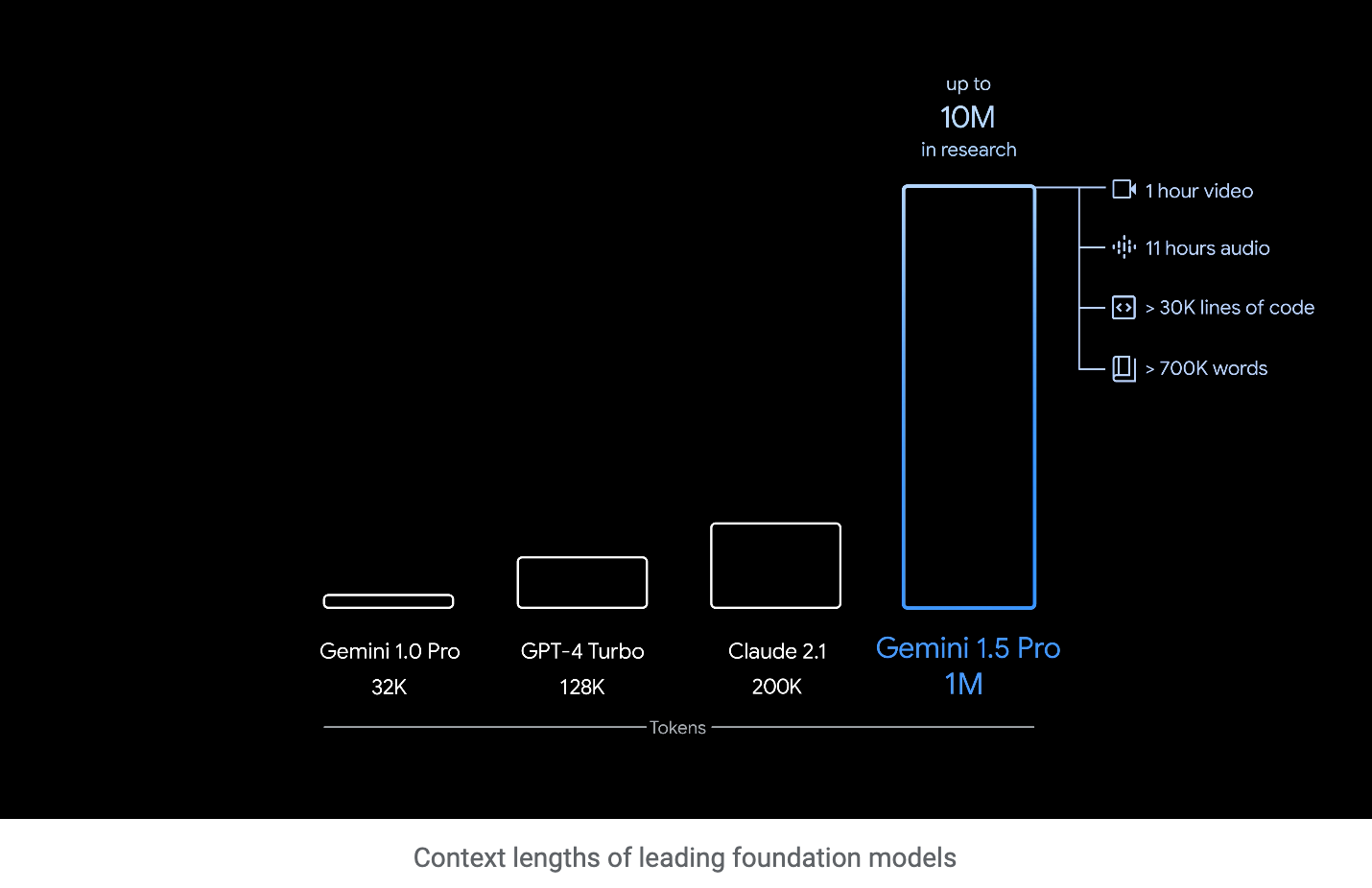This Week in AI: Sora, Leadership Amid White Collar Job Crisis, Checklist Against AI Washing, NotebookLM for Writing, and More
👋 Hi! This is Joyce Li. Welcome to the third issue of "AI Simplified for Leaders," your weekly digest aimed at unraveling the complexities of artificial intelligence for business leaders, board members, and investors.
As we navigate through a week of significant AI advancements, this issue aims to unpack the latest product launches, expose some emerging signs of 'AI Washing' in the capital markets, and address the critical role of leadership in managing talent and workforce transitions. Join me as we delve into these topics, concluding with a valuable AI tool recommendation for enhancing your writing projects.
You can read past issues here. If you like my newsletter, please subscribe for free and recommend it to your network. I greatly appreciate your support.
A Monumental Week for AI Launches
This week we witnessed the unveiling of Google's powerful Gemini 1.5 Pro model, which boasts a context window surpassing that of all current GPT models in the market (illustration credit: Google).
This advancement could revolutionize the storage, indexing, and retrieval of private data in AI applications, paving the way for innovative business applications with streamlined implementation. Despite its potential, this remarkable release went largely unnoticed, overshadowed by the internet's fascination with a fluffy monster—a captivating creation from the text-to-video AI tool, Sora.
Sora is Here
You can visit OpenAI’s Sora-dedicated page for its stunning videos and research behind it.
The introduction of OpenAI's Sora into the AI landscape significantly impacts video and content creation, challenging existing business models and competitive strategies. Sora's advanced text-to-video capabilities herald a new era of content generation, raising critical questions about the sustainability of current AI application SaaS models and the strategic direction for compute-intensive businesses.
Key Implications and Strategic Considerations:
1. Content Creation Revolution: Sora's launch transforms the AI video creation scene, offering the potential for an influx of high-quality content. This democratization of video production could redefine user experiences across various platforms.
2. Challenges for VC-Funded AI Video Companies: Sora’s video quality far exceeded what’s available at competitors, including Runway AI, which raised $141m last June and Pika Labs AI, which raised $55m in November. Adapting to this new competitive landscape requires innovation and strategic agility.
3. AI SaaS Model Viability: The continuous expansion of OpenAI’s scope and capability prompts a reevaluation of AI SaaS solutions. The ease of creating tools and content on top of leading AI models makes the ‘build or buy’ decision less obvious in AI SaaS vs traditional SaaS. What is a defendable moat in AI applications for customers to pay and therefore justify a calculation of customer lifetime value?
4. Compute-Intensive Business Dilemma: Similar to capex-heavy industries of the past, companies focused on developing AI models face strategic challenges, as models could have very short shelf lives and yet expensive training costs.
5. Investment Strategy Shifts: The presence of groundbreaking models like Sora necessitates a more discerning approach from investors, perhaps making people more cautious in writing large AI investment checks. Is the AI infrastructure investment thesis next to be challenged?
In summary, Sora not only marks a technological breakthrough but also prompts a strategic recalibration across the AI ecosystem. Businesses and investors alike must navigate these changes thoughtfully, leveraging opportunities while mitigating risks associated with this rapid evolution.
Leadership Wanted: Addressing the White Collar Job Crisis
In the "Global Corporate Governance Trend in 2024" report, Russell Reynolds Associates, a global research and leadership advisory firm, predicts an increase in shareholder proposals concerning AI’s impact on the workforce. The International Monetary Fund (IMF) in a January report has highlighted that about 60% of knowledge workers in advanced economies are vulnerable to AI's impacts.
The urgency to address AI's influence on the workforce is further accentuated by recent layoffs tied to AI investments from major companies like Amazon, Meta, UPS, IBM, Duolingo, Cisco, Google, and Blackrock. Layoffs.fyi reports over 40,000 people have been laid off this year.
Although firms rarely attribute job reductions directly to AI, the commonly mentioned strategic shifts towards AI and away from traditional roles, including the elimination of middle management positions, hint at a broader realignment of resources. Some believe this could be the peak of knowledge workers, ending the rising trend since the 1980s, as shown in the chart below (credit: Wall Street Journal and St. Louis Fed).
This rapid AI disruption contests the idea that AI-driven productivity gains could mitigate the turmoil within industries facing profound transformation. CBS News, pointing to advancements such as OpenAI's Sora text-to-video tool, illustrates the immediate impact on content creation roles, indicating that professions in media, advertising, and education are on the front lines of AI reshaping.
The task of managing this transition should not be left to individual workers, whose skills may soon become outdated. Instead, a supportive ecosystem is necessary to assist those displaced by these technological shifts.
Leaders can adopt several strategies to effectively navigate these challenges:
1. Implement Comprehensive Reskilling Programs: Leaders should initiate targeted training and educational programs to equip workers with new skills pertinent to the evolving job market. This includes not only technical skills related to AI and digital technologies but also soft skills more resistant to automation. An example includes Chemours, which, as reported by the Wall Street Journal, has trained nearly 1,000 office and lab workers in AI applications over the past three years.
2. Create Transition Pathways: It's essential to provide clear transition pathways for workers moving from AI-disrupted roles to new opportunities. This may involve job placement services and financial support during the retraining phase.
3. Strengthen Labor Relations: Open and transparent communication with employees and labor representatives regarding AI's impact is vital. Collaborating on reskilling initiatives and transition strategies can alleviate tensions and foster a resilient workforce.
4. Anticipate and Adapt to AI Regulations: With the regulatory environment around AI evolving, leaders must ensure their organizations are prepared for compliance. This includes engaging in policy discussions and developing ethical AI frameworks.
5. Promote Inclusive and Ethical AI Development: Leaders should advocate for the creation of AI technologies that are inclusive, ethical, and augment human capabilities, thereby addressing biases and considering AI's long-term societal impacts.
Leadership in the AI era entails navigating uncertainties with strategies that not only protect but also prepare the workforce for upcoming shifts. The influence of AI on society extends well beyond the corporate realm, carrying significant societal implications. By adopting a comprehensive approach, we can ensure that the benefits of AI are distributed equitably, readying the entire workforce for the future.
Directors’ Corner: Checklist to Guard Against AI Washing in Capital Markets
In 2024, AI's prominence in corporate strategy has become more pronounced, with 36% of S&P 500 companies mentioning "AI" in their earnings calls. The same report by Goldman Sachs revealed that companies actively pursuing or facilitating AI technology have seen remarkable market performance, outdoing the equal-weight S&P 500 by a striking 19 percentage points since the year's start.
This burgeoning enthusiasm for AI has sparked concern on potential ‘AI washing’. The term refers to the embellishment of a company's AI capabilities, projecting a facade of innovation and technological sophistication that may not align with reality.
For board directors and business leaders, the imperative is to discern the substance from the hype. SEC Chair Gary Gensler's warnings against AI washing recently underscore the necessity of accurate, specific disclosures about AI's role in operations. Investors and executives must critically evaluate AI claims, ensuring that any stated AI capabilities are not only genuine but also responsibly integrated.
Here is a checklist to guard against 'AI washing' for directors and executives:
Set the Right Expectation: Not all businesses need to be AI-first. Leaders should not be driven by FOMO (fear-of-missing-out) on AI strategies.
Rigorous Verification of AI Claims: Directors should demand evidence supporting claims about AI capabilities.
Commitment to AI Transparency: Advocate for clear communication about the company's AI initiatives and data strategy.
Active Oversight of AI Development and Deployment: Ensure continuous oversight of AI projects and adherence to ethical AI practices.
Critical Assessment of AI Impact on Business Model: Evaluate how AI technologies align with or disrupt the current business model.
Board members should also ensure that the company's investment in AI is accompanied by robust risk management practices and compliance with emerging regulations. This oversight is crucial not only for regulatory adherence but also for maintaining a competitive edge and ensuring financial prosperity as AI continues to reshape the corporate landscape.
The stakes of AI washing transcend mere regulatory adherence; authentic AI integration is essential for securing a competitive edge and ensuring long-term financial prosperity. Investor and leadership vigilance against AI washing is not just prudent—it's a strategic imperative.
AI Tool Spotlight: Write with Google’s NotebookLM
Steven Johnson, a prolific non-fiction writer with 13 books to his name, collaborated with Google in developing their notebook language model (LM) product, designed specifically with writers in mind. NotebookLM is powered by Google’s Gemini AI model and is currently free.
Unlike ChatGPT which is more suited for general-purpose writing, NotebookLM is designed for academic and business writers who are much more demanding on accuracy, privacy, and security:
Accuracy and Personalization: NotebookLM allows users to ‘ground’ the language model in specific documents they choose, effectively reducing hallucinations and creating a personalized AI versed in the information relevant to you, the writer.
Summarization and Ideation: NotebookLM can automatically generate summaries, key topics, and questions to ask for a better understanding of the material. You can upload many documents with up to hundreds of pages each.
Privacy and Data Security: The model only has access to the source material that you've chosen to upload, and your files and dialogue with the AI are not visible to other users. Google also states that they do not use any of the data collected to train new AI models.
You can try NotebookLM here. It takes a bit of effort to get used to. Here is a YouTube tutorial from the productivity guru and author Tiago Forte on how he sets up and uses Google NotebookLM.
Here is a bonus article for you: WSJ: It’s the End of the Web as We Know It: AI is changing how we use the web at the same time that it floods the world with questionable content. Many highly profitable business models such as search ads or traffic-driven monetization will fundamentally change, while oversight of responsible use of AI needs to be accelerated.
Thank you for your continued support and engagement. Together, we can harness the power of AI to lead with foresight and innovation. If this newsletter is useful for you, please recommend it to your friends.












Joyce, this is a great list for managing the employment transition through a supportive ecosystem including business, policy, workforce dev, and employees. Thank you!